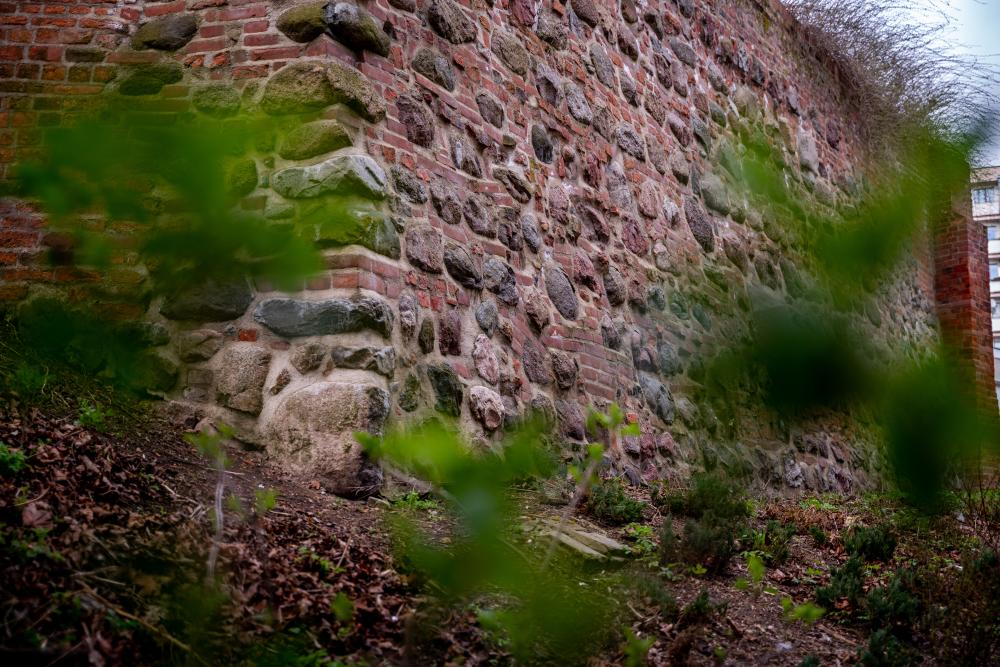Fragment of the Medieval Fortification Wall

Seven layers of an old brick wall were laid on the layer of field stones.
Initially, the city fortifications were made of wood and dirt, then they were replaced by a more durable stone or brick structure. The location of the city on two levels and the need to build the walls running from the upper level to the lower, on the slopes of the gorges caused a great difficulty in erecting medieval fortifications. Therefore the lower part of the defensive wall was used to support the embankment.
The defensive walls were 2510 m long, had 4 gates (Mill, Holy Spirit, Maiden, Passau), 8 wicket gates and almost 30 towers.
By the end of the 15th century, Szczecin was completely surrounded by brick walls and a double moat separated by a rampart.
The historic wall features a plaque to commemorate hetman Stefan Czarniecki's army’s pursuit of the retreating Swedish army after the infamous "Deluge", which reads: "1657-1957. On the 300th anniversary of hetman Stefan Czarniecki's battle in Szczecin. The people of West Pomerania". It was a typical (predatory and retaliatory) diversion to distract the Swedes from activities in Poland (part of Pomerania with Szczecin was under the rule of the Kingdom of Sweden under the Peace of Westphalia in 1648).
